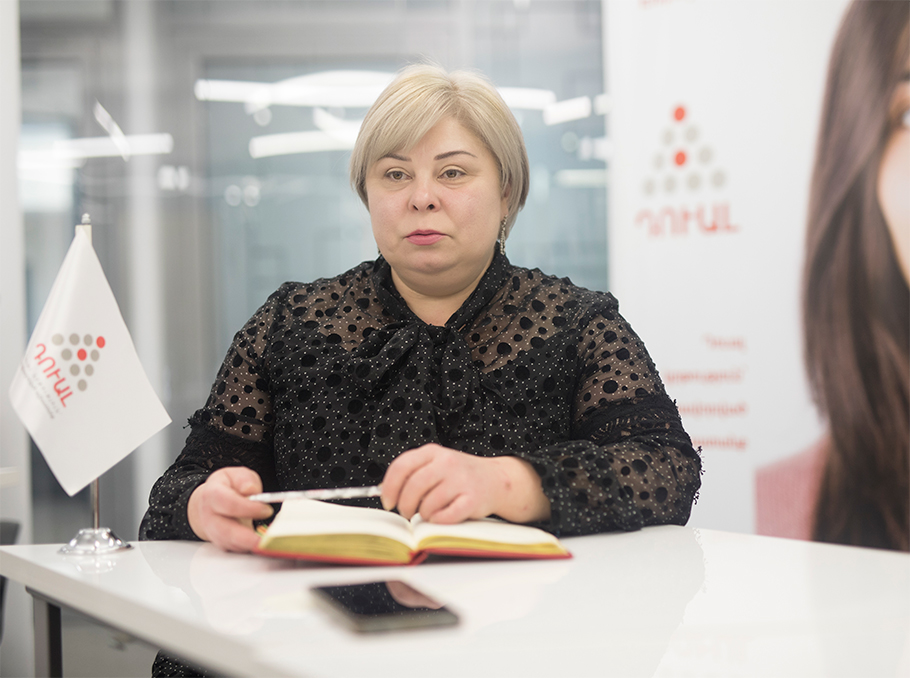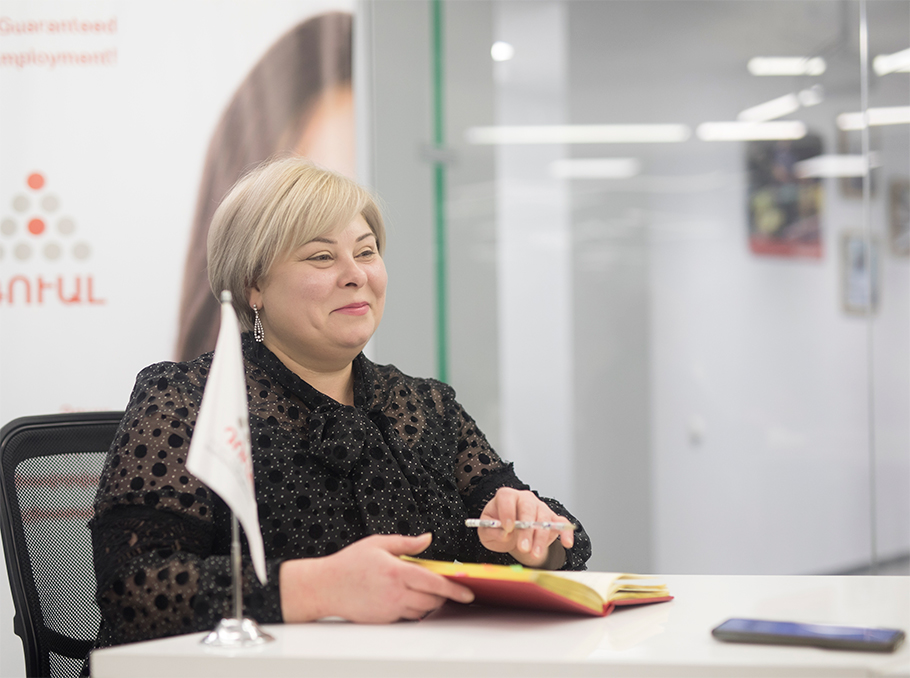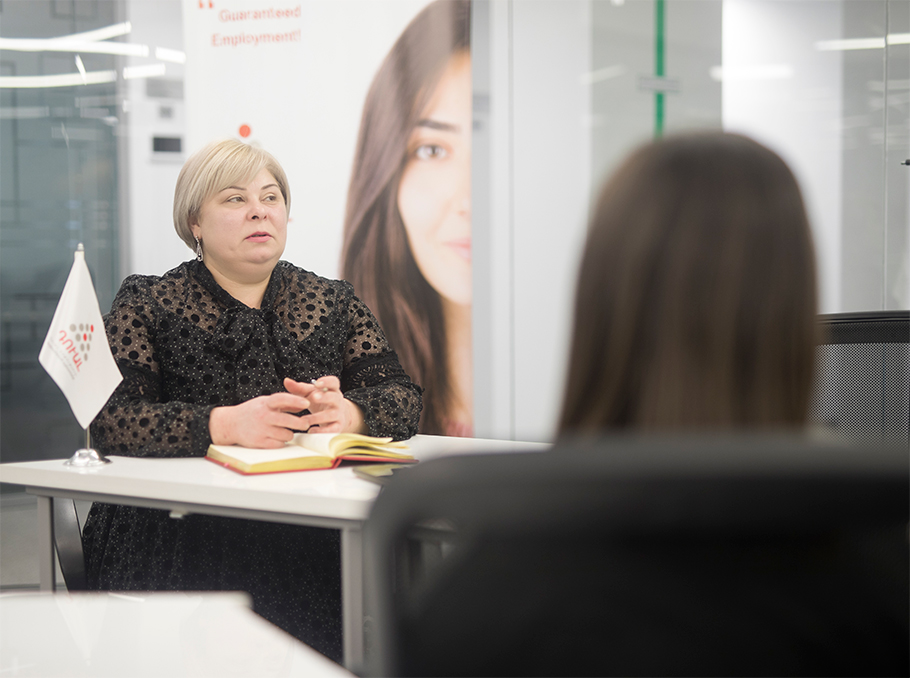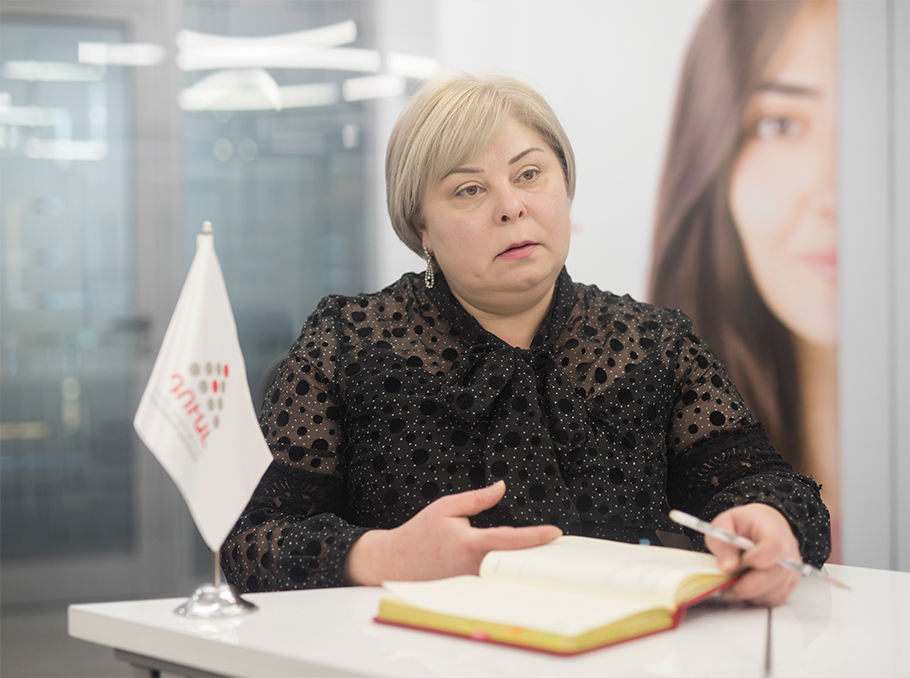Dual education is one of the work-based learning models. A student, being taught in both environments, acquires not only theoretical knowledge, but also practical skills, due to working in his/her profession. It is obvious that dual education has many advantages from the student’s perspective, but this model is no less important for the other parties – the state and private companies.
Speaking with Mediamax, Yulia Stakyan, Programme Expert at Private Sector Development and Technical Vocational Education and Training in the South Caucasus” (PSD TVET) program implemented by GIZ, touched upon establishment of this education system, presented its advantages from the perspective of the student, the state and private companies.
The 500-year-old system and the Soviet experience of dual education
The dual education system was formed in Germany 500 years ago. It was originally practiced in the private sector, in the artisan guild. Later, of course, it underwent many transformations, after which, as a successful experience was spread to other countries.
 Yulia Stakyan
Yulia StakyanPhoto: Mediamax
To introduce the dual education system, it is necessary to know how the economy of the state works as this model of education implies the implementation of an educational program in two places: in a vocational educational institution and in a private organisation. The role of both parties is very important. Practical training in a private company should even prevail. Thus, the graduate acquires all the necessary skills to find a job right away. It is also important that the results of dual education are evaluated by a third, independent party. In the case of this model of education, the final exams are held directly in the working environment, in a private organisation, and the committee includes experts in the field who did not participate in the implementation of the educational program. In the case of dual education, all parties are united by the needs of the given profession and the awareness that these needs should be reflected in the educational programs.
I mentioned the importance of the way the economy works: it is remarkable that this system existed and was applied even in the Soviet Union. It is true that the economy was planned and the state coordinated all processes. In other words, there was both the customer and the contractor.
The experts of the older generation will remember that during the Soviet years, colleges were attached to many factories that trained the necessary specialists. After the collapse of the USSR, the economy naturally changed and the post-Soviet countries needed to understand how to organise cooperation between the three-level circles. The first and highest level is “macro”, which includes associations, unions or chambers representing the state and the private sector. The other “meso” level includes private companies interested in participating in educational programs. The last, third level, includes teachers from both educational institutions and private companies.
The dual education model from the student’s perspective
As I mentioned, in the case of a dual education system, the student transitions to the labor market faster. The advantage seems obvious.
We have a serious problem of professional orientation in Armenia, the importance and role of each educational level is not presented correctly. Higher education – with selected special professions – has been “fashionable” for many years. As a result, students could not find a job after graduating, because the demands of the labour market were different. Now this trend is changing.
Last year, our partners conducted an interesting survey in universities. Students majoring in economics were asked what skills they would like to have. Many answered that they wanted to become a hairdresser or manicurist. The problem is that after graduating from the university, they will probably go in that direction, but from the beginning they chose a different profession, spent money and time. The biggest advantage of the dual education model is that during the years of study, the student works in his/her profession, gains experience, understands whether it is interesting to him/her or not.
Now we are also working in the direction of legislative changes for a student to become a legal entity and get paid while studying. This will be especially important for the regions, from where young people are mostly forced to come to Yerevan, spend money and most likely stay in the capital even after the end of their education, because they fail to find jobs in their specialisation in the region. We are trying to ensure this decentralisation, because the strengthening of the regions and the cessation of region-capital migration are of strategic importance.
In 2021, we monitored 13 projects implemented within the framework of the Private Sector Development and Technical Vocational Education and Training Program. The picture was as follows: 1/3 of the students of the dual education model found jobs after graduation or even during their studies, 1/3 continued education in the same specialization at the universities, and 1/3 left for compulsory military service.
Dual education from a private organisation’s perspective
Even in Germany, where the dual education model is one of the most developed in the world, only 30 percent of private companies participate in this process. I like to say that this system is for the selected ones. Those organisations which clearly realise that their development is agreed with human capital, young professionals, know that there are the ones to educate these professionals. If there is no such awareness, it is quite difficult to “convince” and make the organisation a part of the educational process.
 Yulia Stakyan
Yulia StakyanPhoto: Mediamax
We had cases when a private organisation withdrew from the process after the launch of the project, stating that they cannot spend so many resources. In this regard, we are trying to find certain solutions not to lose anyone on the way. Here too, legislative changes are needed to give advantages to the companies that become part of the educational process. It is also important to work properly with the public, presenting the obtained results.
I will bring an example from the IT sector, where we conducted a research as well. We tried to find out how much money a student spends on his/her education and how much money the company spends on the training of that student to get the specialist it needs. As a result, we found out that the company spends on trainings an amount equal to 70 percent of the cost of a 4-year education of undergraduate student. In this case, isn’t it more effective to engage in the educational process at once, which will allow to cut both costs and time?
In addition, by going to the company, the student becomes a carrier of the corporate culture from the beginning, gets familiarised with the principles and values of the company. A workplace adjustment is taking place.
Becoming a part of the dual system raises the image of the organisation as it becomes an educational link at the state level.
Advantages of the dual education system from economy’s perspective
In my opinion the major beneficiary of VET dual education system is the country’s economy. It is clear that mid-level workforce is extremely important for the economy. They are the driver of the economy. For example, in Germany, which has a developed economy, 70 percent of the workforce comes from vocational education sector.
It is very important for the economic development strategies to have the understanding that the development of human capital is a priority for all sectors, particularly for Armenia.
 Yulia Stakyan
Yulia StakyanPhoto: Mediamax
In addition to educating qualified staff for private companies, we also attach great importance to self-employment. In cooperation with the Ministry of Education, Science, Culture and Sports and the National Center for Vocational Education and Training Development, we introduced the “Entrepreneurial Skills Development” educational module mandatory for all professions. We want students, having received professional knowledge, to be able to “sell” it, develop business plans and leave educational institutions with ready-made projects.
“Private Sector Development and Technical Vocational Education and Training in the South Caucasus” (PSD TVET) program is implemented by the Deutsche Gesellschaft für Internationale Zusammenarbeit (GIZ) GmbH on behalf of the Federal Ministry for Economic Cooperation and Development (BMZ).
MAVETA program started on December 3, 2021, with a preparatory phase that has been successfully summarized in August 2022. The 1st main phase of implementation started afterwards, which will last until August 2025 with total budget of CHF 8.3 million. MAVETA program works to anchor this dual education approach at the political and institutional level. Within the framework of the program, dual education has been introduced at Goris State Agricultural College, Sisian College of ANAU (Syunik), Stepanavan State Agricultural College (Lori), Berd State Multifunctional College (Tavush), Echmiadzin Craftsman State School (Armavir) and Yerevan College of ANAU.
The MAVETA project is funded by a broad coalition of international and local organizations led by the Swiss Agency for Development and Cooperation (SDC), including the Austrian Development Agency, the German Ministry for Economic Cooperation and Development (BMZ), the Government of Armenia, the Swiss Church Aid (HEKS/EPER) NGO, Izmirlian Foundation, the Strategic Development Agency (SDA) NGO and Vanand Agro CJSC.
The project’s implementing partners are the GIZ and HEKS/EPER with the involvement of SDA and the School of Agricultural, Forest and Food Sciences at the Bern University of Applied Sciences (HAFL).
Yana Shakhramanyan
Photos by Emin Aristakesyan

















Comments
Dear visitors, You can place your opinion on the material using your Facebook account. Please, be polite and follow our simple rules: you are not allowed to make off - topic comments, place advertisements, use abusive and filthy language. The editorial staff reserves the right to moderate and delete comments in case of breach of the rules.